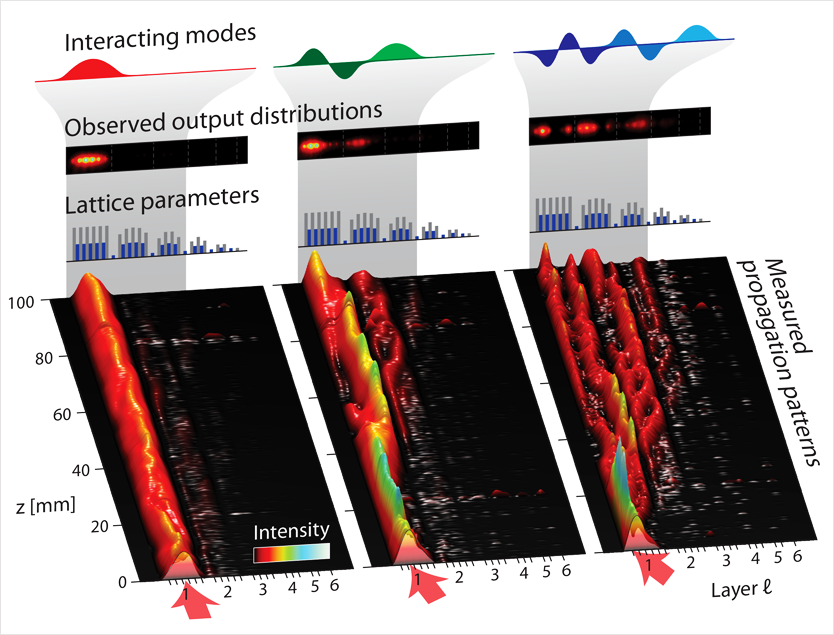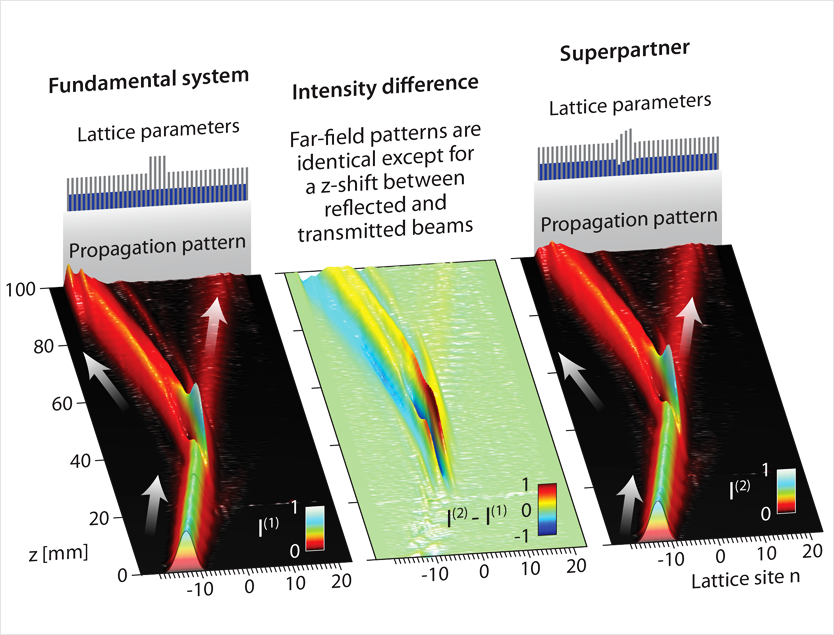Supersymmetric photonics


Notions from supersymmetry (SUSY) give rise to an entirely new class of photonic systems [Phys. Rev. Lett. 110, 233902 (2013)]. SUSY partners exhibit perfect global phase matching across the entire spectrum of their guided modes. Since the fundamental mode is the one notable exception from this relation, hierarchical “ladders” of SUSY waveguides can designed to carry out highly efficient mode conversion [Nature Commun. 5, 3698 (2014)], a key requirement for future integrated mode division multiplexing architectures.
SUSY optical transformations enable the synthesis of low-contrast equivalent structures that faithfully mimic the reflection/transmission properties of high-index-contrast arrangements [Optica 1, 89 (2014)]. These techniques can be naturally extended to non-Hermitian settings, where they give rise to rich families of pseudo-Hermitian index landscapes beyond PT symmetry [Phys. Rev. A 87, 043819 (2013)].
Our experimental efforts are centred around discrete supersymmetric waveguide lattices, where discreteness dramatically simplifies the implementation of SUSY systems, e.g. by femtosecond laser direct inscription. In turn, we employ waveguide fluorescence microscopy to directly observe their complex propagation dynamics, recently leading to the first observation of scattering in supersymmetric photonic lattices [Optics Lett. 39, 6130 (2014)] and topological state engineering via supersymmetric transformations [Commun. Phys. 3, 49 (2020)].
